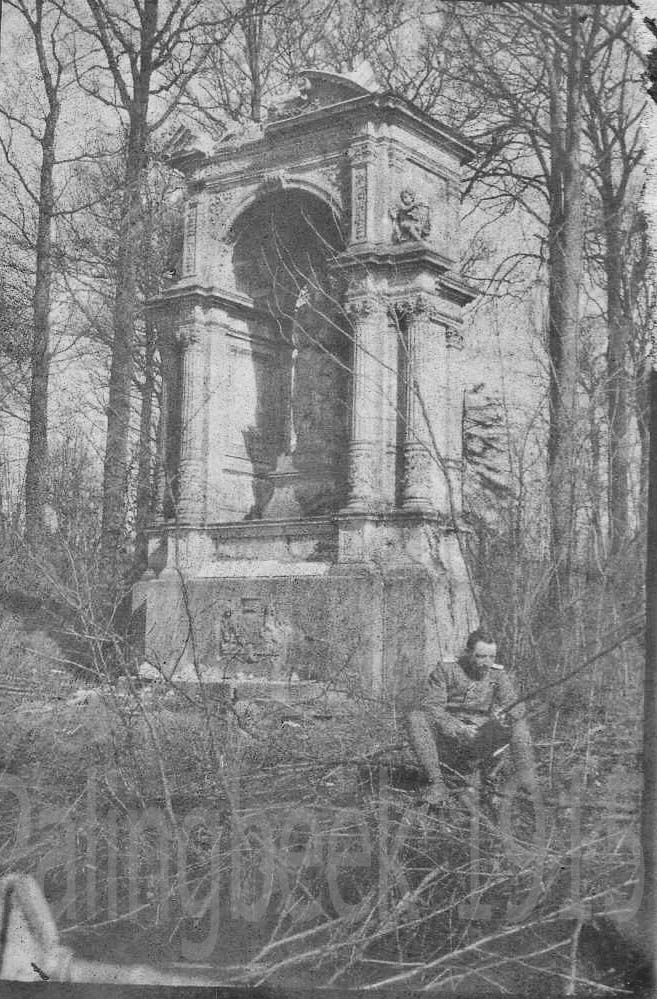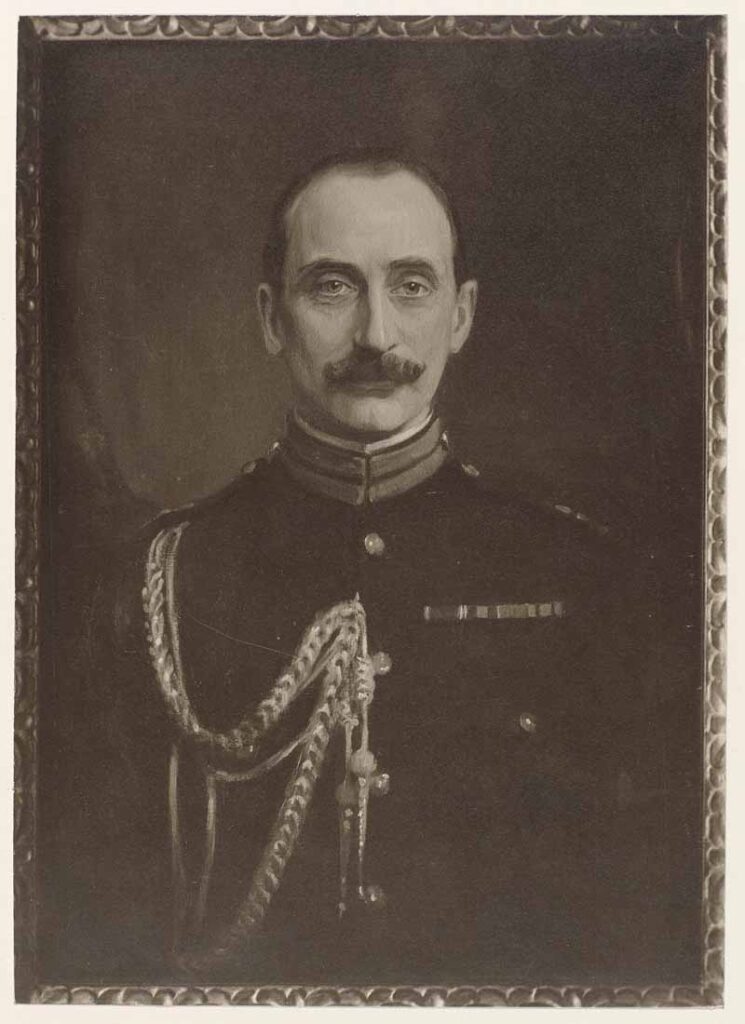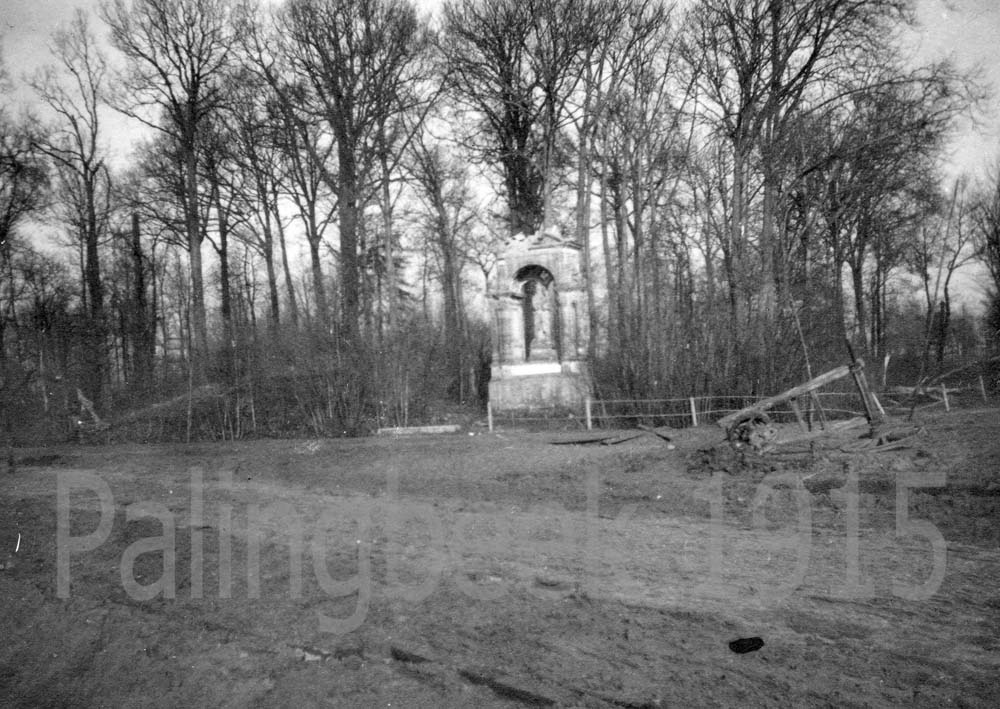Onze-Lieve-Vrouw van de Kanker (Notre Dame de Cancre) was a grand neo-renaissance sculpture at the junction of the Hollebeke, Zandvoorde and Kortewilde roads. It gradually sustained damage throughout the war and was a favourite subject for the German soldier photographer.

This wegkapel finally disappeared into dust when it came between the new front line of June 1917 to April 1918. But by the time the above photograph had been taken, this monument had found itself between the front lines of a far more important confrontation on 30th October 1914.
On this day, entire German regiments, each numbering at that time around 7500 men, had been launched as spearheads of the Fabeck Offensive on either side of the canal. Their aim: to punch through the canal bend position and capture the high ground ahead, forcing a British withdrawal from Geluveld. Facing them were scattered strongpoints of dismounted cavalry and a battalion of British Empire soldiers from Balochistan. On the east side of the canal, from Kortewilde the Bavarian KB IR5 advanced towards an outpost line of a few hundred dismounted cavalrymen who were dug into the shrubbery on either side of the Mary shrine.
The British cavalry detachment under Major Lord Charles Nairne formed an outpost line at the edge of the Hollebeke Chateau park, there to delay the advance and then withdraw to the higher ground behind where the main defensive strongpoint awaited. With their machine gun on the railway embankment to their right and the cover of the woodland, this was a good defencive position but manned by at most a couple of hundred troopers against some thousands. Vulnerable to be outflanked on the Zandvoorde side, it could not hold for long. But hold it did, from 7.30 am until final evacuation at 3.00 pm.

Although Zandvoorde fell to the Germans early in the day, the main thrusts of the Fabeck Offensive exhausted themselves against small but determined troop concentrations, as the Baluchis and Lancers matched the heroic stand of the Royals in their defence of Hollebeke on the other side of the canal.
With gaps into open countryside on either side of every strongpoint, the German assault troops were still drawn into sieges rather than bypassing and encircling their inferior enemy. This was a gross tactical error which allowed the extremely limited numbers of British reserve troops time to deploy to meet each challenge, as one by one these positions fell. With a manpower advantage of more than ten to one, at the end of the day KB IR5 celebrated the capture of the Hollebeke Chateau as a satisfactory day’s work, while on paper, they should have been besieging Zillebeke.

